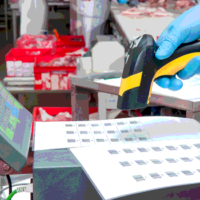Almost 20 years after it was first proposed, the U.S. Food and Drug Administration (FDA) published a final regulation that formally replaces the generally recognized as safe “GRAS” affirmation petition process with a voluntary notification procedure. In practice, however, FDA has accepted GRAS notifications since 1998, effectively abandoning the GRAS petitioning process at that time.
Issued on August 17, 2016, the final regulation also clarifies the criteria used to determine whether the use of a substance in human or animal food is GRAS under its intended condition of use.1 While maintaining much of the status quo, the final regulation clarifies the types of data that can be used to support a GRAS conclusion, expands the required dietary exposure information and implements changes in how confidential information is handled. It also mandates new format requirements for GRAS notices (previously “GRAS notifications”).
Background on the GRAS Exemption/Exclusion
The GRAS exemption was established by the Food Additives Amendment of 1958, which defined the exemption as applying to a substance that is “generally recognized, among experts qualified by scientific training and experience to evaluate [its] safety, as having been adequately shown through scientific procedures (or, in the case of a substance used in food prior to January 1, 1958, through either scientific procedures or experience based on common use in food) to be safe under the conditions of its intended use.” Such substances are excluded from the definition of a food additive and, therefore, are permitted to be used without premarket clearance from FDA. Thus, a substance may be used on the basis that it is GRAS based on a determination made by individual companies as to whether the statutory standard has been met and without review by FDA. FDA regulations have long required the same quality and quantity of scientific data to support a GRAS determination as are necessary to support a food additive petition.
In 1958, FDA first published a list of substances it recognized as GRAS in the Code of Federal Regulations (21 C.F.R. Part 182). This list came about when manufacturers would write the agency and request an informal opinion letter as to its determination that a GRAS position was justified. This continued until 1972, when FDA established though rulemaking a voluntary GRAS affirmation petition process, whereby an individual or company could petition FDA to review and affirm the GRAS status of a substance. FDA would then publish a notice of the filing in the Federal Register, request comments, conduct a comprehensive review and then publish a final rule in the Federal Register if the agency agreed with the petition. Due to a backlog of petitions by the late 1980s, petitioners often began marketing a substance once FDA had accepted a petition for filing. As time went on, FDA typically did not take further action on these petitions, after accepting them for filing.
The next milestone occurred in 1997, when FDA proposed a voluntary GRAS notification regulation. With the proposal, FDA invited interested parties to file notifications for substances in which they were interested in taking a GRAS position, instead of submitting GRAS affirmation petitions. This effectively put the GRAS affirmation petition process on ice. Under the proposed GRAS notification rule, FDA would evaluate the data and then inform the submitter that either it has no questions currently as to the basis for the determination, or it has determined that the notice does not provide a sufficient basis for a GRAS determination and explain the reasons. If the issues raised by the agency could be satisfactorily answered, FDA would respond by saying it had no questions.
Between 1998 and December 31, 2015, FDA’s Center for Food Safety and Applied Nutrition responded to 614 GRAS notices. FDA’s Center for Veterinary Medicine (CVM) established an interim pilot program for GRAS notices in December 2010, and between then and December 31, 2015, responded to 18 GRAS notices.
Calls to finalize the GRAS notification rule began in 2010 with the publication of the Government Accounting Office (GAO) report Food Safety: FDA Should Strengthen Its Oversight of Food Ingredients Determined to Be Generally Recognized as Safe (GRAS). GAO also recommended that FDA should: 1) issue guidance on how to support GRAS conclusions; 2) minimize the potential for conflict of interest on “GRAS panels;” 3) require that the GRAS status of a substance be reconsidered as new scientific information emerges; 4) develop a strategy to require any company that conducts a GRAS determination to provide FDA with basic information about the determination; and 5) obtain more information on nanomaterials used in food. FDA did request further comments on the proposed 1997 GRAS notification procedure in December 2010.
Concern about FDA’s lack of sufficient information to assess the safety of GRAS substances was also expressed in a November 2013 report by The Pew Charitable Trusts, entitled Fixing the Oversight of Chemicals Added to Our Food. The Pew report recommended that Congress update the Food Additives Amendment of 1958 to ensure that FDA approve the use of all new chemicals added to food and review changes to existing uses of previously approved additives. In February 2014, the Center for Food Safety filed a lawsuit to vacate the 1997 proposed notification rule, which would have effectively reinstated the petition process. Under a Consent Decree issued by the U.S. District Court for the District of Columbia, FDA agreed to issue a final rule on the GRAS review program by August 31, 2016.
The Final GRAS Rule
In finalizing the voluntary GRAS notification procedure, FDA pointed out that Section 201(s) of the Federal Food, Drug, and Cosmetic Act of 1938 allows a substance that is GRAS for a particular use to be marketed for that use without premarket approval. In response to a comment on the proposed rule that FDA require companies to notify the agency of a conclusion of GRAS status, FDA responded that it lacked the statutory authority to require companies to submit GRAS notices under the provisions of Section 201(s). However, the agency pointed out that the criteria for a conclusion that a substance is GRAS under the conditions of its intended use apply to all conclusions of GRAS status, not just those in a GRAS notice.
The final GRAS rule specifies the process for submitting a GRAS notice and the information that should be included in the notice. More specifically, the rule addresses the scientific evidence that should be submitted to demonstrate safety, as well as the manner in which a notifier can demonstrate that the scientific evidence used to establish safety is generally available to the relevant expert scientific community and accepted by that community as demonstrating a reasonable certainty of no harm.
The final rule clarifies that “General recognition of safety requires common knowledge, throughout the expert scientific community knowledgeable about the safety of substances directly or indirectly added to food, that there is a reasonable certainty that the substance is not harmful under the conditions of its intended use.” Common knowledge can be based on either scientific procedures or experience based on common use of a substance in food prior to January 1, 1958.
A GRAS notice must include seven parts, namely:
• Signed statements and a certification
• The identity, method of manufacture, specifications and physical or technical effect of the notified substance
• Dietary exposure information
• Self-limiting levels of use in circumstances where the amount of the notified substance that can be added to human food or animal food is limited because the food containing levels of the notified substance above a particular level would become unpalatable or technologically impractical
• The history of consumption of the substance for food use by a significant number of consumers (or animals) prior to January 1, 1958, if a conclusion of GRAS status is based on common use of the substance in food prior to 1958
• A narrative that provides the basis for the notifier’s conclusion of GRAS status, including why the scientific data, information, methods and principles described in the notice provide a basis for the conclusion that the notified substance is generally recognized, among qualified experts, to be safe under the conditions of its intended use
• A list of the generally available data, information and methods the notifier cites in the GRAS notice
Confidential information or trade secrets are not permitted in Part 1 of GRAS notices, and when included in other parts, the notifier must explain the basis for a conclusion of GRAS status if qualified experts do not have access to the confidential information.
Data Requirements
FDA explains in the Federal Register notice that “general recognition of safety through scientific procedures must be based upon the application of generally available and accepted scientific data, information or methods, which ordinarily are published, as well as the application of scientific principles, and may be corroborated by the application of unpublished scientific data, information or methods.” FDA clarifies that while publication in a peer-reviewed scientific journal is the usual mechanism to establish that information is publicly available, a conclusion of GRAS status can also be supported by other means, such as published technical literature in textbooks or reports by the Joint Expert Committee on Food Additives (a committee of the Food and Agriculture Organization and the World Health Organization). Unpublished data and information can be used to confirm a conclusion of GRAS status; however, the conclusion must be based solely on the publicly available information. A notifier must also ensure that all data—including unfavorable unpublished data—are discussed.
The new GRAS rule requires information about dietary exposure in both Parts 3 and 6 of the notice. Part 3 addresses how much of the notified substance consumers would eat as part of the total diet—both from its intended use and from other sources in the diet—in addition to how much consumers would eat of other, related substances, such as contaminants and byproducts. Part 6 requires the notifier to discuss the safety of the notified substance, taking into account all dietary sources and any chemically or pharmacologically related substances.
Part of the new GRAS regulations specifically addresses animal feed. For example, sufficient data and information must be provided to address safety for both the target animal and for humans consuming food derived from the animal. However, the requirements specific to animal feed do not represent a change from CVM’s current practice under its interim pilot program.
How FDA Will Respond
Once FDA receives a GRAS notice, the agency will conduct an initial evaluation and will either file the notice and inform the notifier of the filing date or send the notifier a letter explaining why the GRAS notice is not being filed. FDA will generally respond to a GRAS notice within 180 days of filing but may extend its response time by 90 days.
FDA’s possible responses to a GRAS notice are similar to the options available under the proposed rule: 1) send a “no questions” letter; 2) send an insufficient-basis letter; or 3) send a cease-to-evaluate letter when the notifier requests that FDA stop evaluating the notification. However, FDA explains that future responses to GRAS notices may not fit within one of the current categories of response letters.
Under the interim pilot program, a cease-to-evaluate letter generally repeated any reason specified in the request letter. FDA will now include a discussion of the substantive reason(s) why the agency is ceasing its evaluation. Additionally, FDA may not honor a cease-to-evaluate request.
The final GRAS rule expands the amount of information that is publicly available. For example, even though FDA will not post on its website letters informing notifiers that a GRAS notice will not be filed (since there would not be a related entry for the GRAS notice to which the letter could be associated), a decision to release the letter in response to a Freedom of Information Act request could be made on a case-by-case basis. A GRAS notice cannot be withdrawn from the public record once submitted.
The final rule became effective October 17, 2016.
George G. Misko, Esq., is a partner in the Washington, DC, office of Keller and Heckman LLP. He can be reached at misko@khlaw.com.
Reference
1. www.federalregister.gov/documents/2016/08/17/2016-19164/substances-generally-recognized-as-safe.




